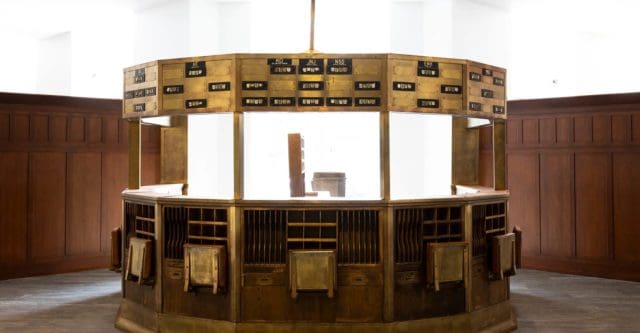Originally published by Emory Magazine. Photographs by Kay Hinton. Text by Roger Slavens. Design by Elizabeth Hautau Karp.
In this photo-driven series, Emory Magazine uncovers hidden locales and treasures residing on Emory’s campuses that await your discovery or reacquaintance. Alongside these illuminating images, we share the historic, often curious stories of how they all came to be a part of the university.
In February 2024, Robert Enslein Jr. 92C was taking his son Alexander on a tour of Emory when they stumbled across a surprising sight. Anchored on the first floor of the Goizueta Business School building stood a horseshoe-shaped trading post. The piece was primarily made of polished oak and gleaming brass. It was once a fixture of the New York Stock Exchange (NYSE) from the early 1930s up until 1980.
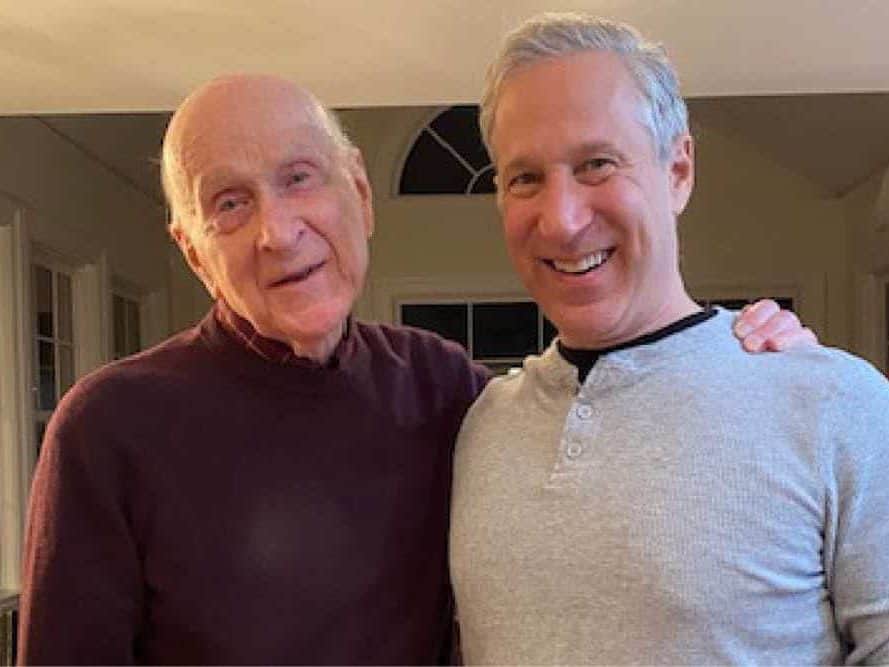
Believe it or not, Enslein grew up with part of one of these historic trading posts occupying his childhood home. He was so excited to see the post on display that he took a flurry of photos on his phone. Then, he sent them to his father and called him to share the discovery.
“Where are you?” his father asked him.
“I’m at Emory,” Enslein said. “Did you know that one of these trading posts was here?”
“Yes, I gave it to them,” his father answered.
“Why didn’t you tell me you did this?” Enslein said.
“It didn’t seem important at the time,” his father humbly replied.
The Unsung Hero of Coca-Cola New York Stock Exchange No. 7
But it was important. Robert Enslein Sr. was the main reason why Emory wound up as home to NYSE Trading Post No. 7, the specific post where Coca-Cola once exchanged shares. Emory’s business school, after all, is named after Roberto C. Goizueta, the legendary board chairman and CEO of The Coca-Cola Company.
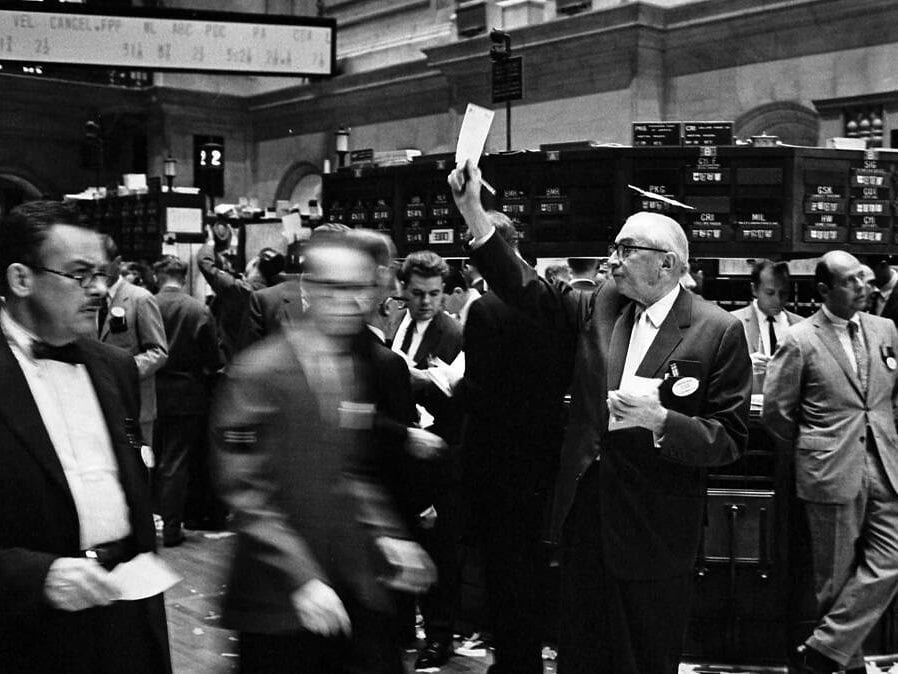
Enslein Sr. worked on the floor of the NYSE for decades as a specialist—a so-called “market maker” whose job is to maintain a fair and orderly market. He held a seat on the exchange and facilitated deals between brokers buying and selling stocks, spending most of his time on the floor at the trading posts.
In the late 1970s, Enslein Sr. played an instrumental role in upgrading the exchange with a new computerized system, replacing the archaic one in which stock trades were recorded on paper slips and dispatched via the posts’ pneumatic tubes. In fact, as a computer expert and former IBM executive, he personally developed the new electronic system, called Designated Order Turnaround, or DOT for short, which helped keep the exchange humming for nearly 30 years.
Preserving a Piece of History
As part of this conversion, Enslein Sr. oversaw the removal of the old “shopworn” posts. He led a committee to determine the fate of these “relics of another age,” as he calls them. The committee decided the trading posts held significant worth as monuments to the exchange’s history and might also provide value in educational settings.
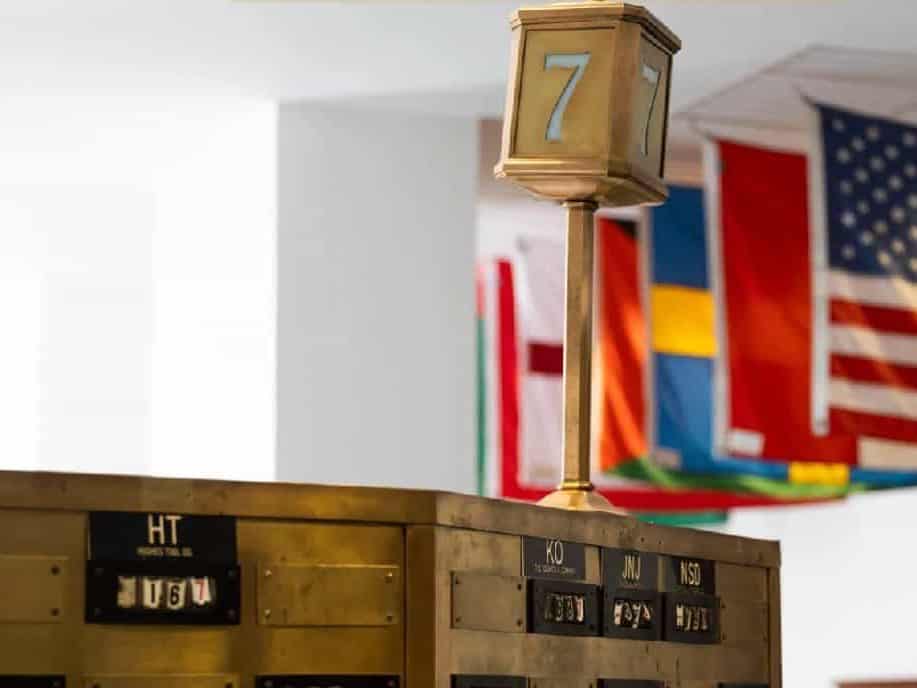
As they left the NYSE trading floor one by one, most of the posts were lovingly refurbished—a process Enslein Sr. oversaw himself. Then, in 1980, the posts were gifted to leading business schools around the country. In addition to Emory, these relics found new homes at Harvard, the University of Chicago, Notre Dame, and Stanford, among others. Another made its way to the Smithsonian’s National Museum of American History in Washington, D.C. One piece from that same post couldn’t be fully salvaged. It still resides in Enslein Sr.’s home in Connecticut.
Trading Post No. 7 moved from the Rich Building to Goizueta’s Jenkins Student Commons in 1997. Now in a much more visible spot, the piece still exudes the fine craftsmanship of the early 1930s. The horseshoe-shaped post is solidly built, with brass frames, oak counters, and leather-covered push-down seats and countertops. The smooth lines of the brass and slight flaring foot tails hint at the prevailing Art Deco fashion. Meanwhile, the pigeonholed interior oak cabinets harken back to the turn-of-the-century Arts and Crafts style.
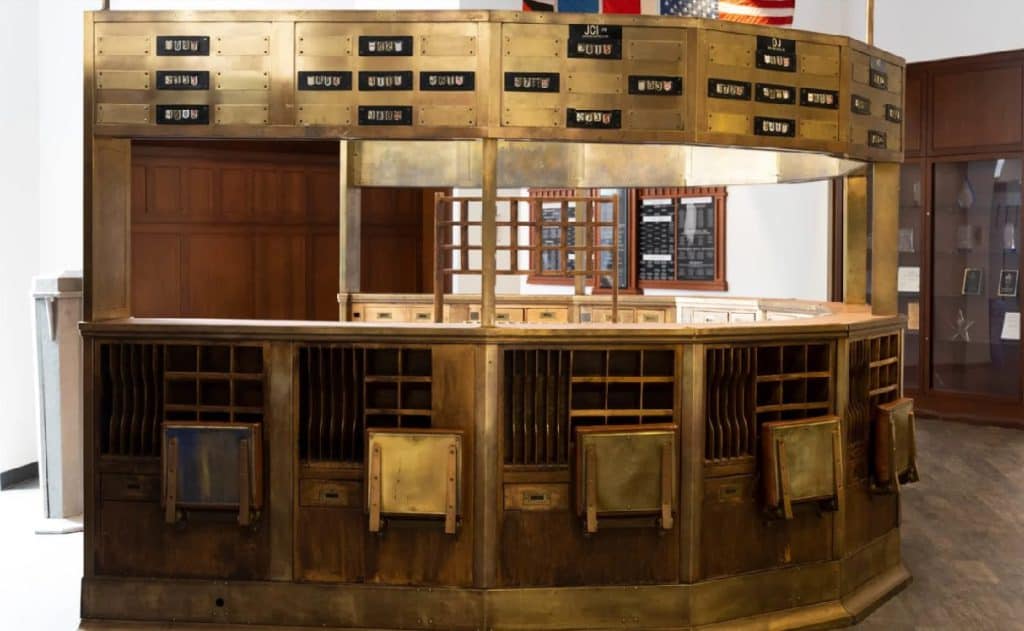
In total, 17 of these posts once dominated the stock exchange floor. The brass superstructure of each post held more than 100 price indicators. Each changed throughout the day to indicate the most recent sale price of each stock, such as Coca-Cola, designated to be traded there. The posts connected to the stock ticker with pneumatic tubes, which sent orders and market data written on paper slips throughout the NYSE building.
From Wall Street to Emory University
Today, it’s difficult to imagine how such an analog system once worked. We now live in a time when virtually every innovation is electronic, but it was high tech for its era.
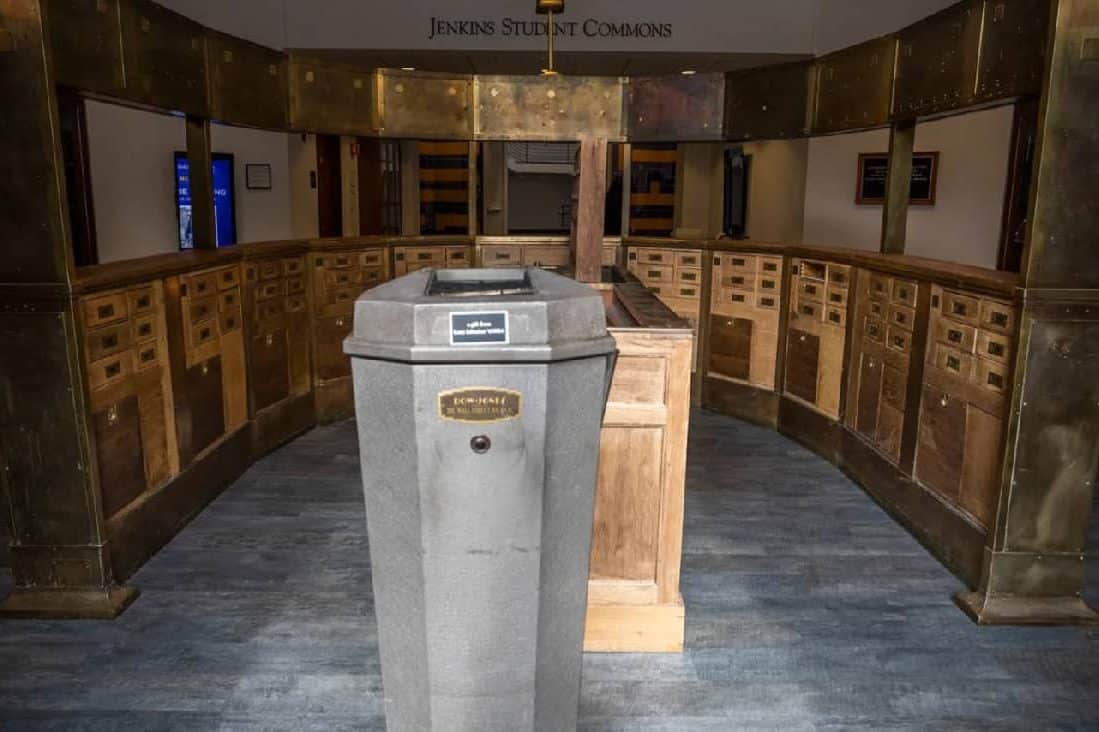
Enslein Jr. couldn’t be happier that he unexpectedly happened upon the trading post at Goizueta. “It brought back so many memories of my father’s work,” he says. “I’m so proud of him, and I’m ecstatic that part of his legacy lives on at my alma mater.”
It also means a lot to him personally. Enslein Jr., too, initially followed his father’s footsteps and worked at the NYSE. “I started on the floor at age 17 and continued trading during my time at Emory,” he says. “During summers off from school, I bought a seat and worked on the New York Futures Exchange.”
More than three decades after graduating from Emory, Enslein Jr. still works in the financial sector. He now serves as chief operating officer for venture capital firm SYN Ventures, which specializes in cybersecurity. He gives back regularly to the university. Shortly after earning his undergraduate degree he started the Robert Enslein Jr. Scholarship Fund to help students in financial need. Enslein Jr. hopes that his father’s anonymous gift of Trading Post No. 7 will leave a lasting impact on Emory.
Overlooked spaces. Forgotten places. Little-known objects and obscure artifacts. Read more from the Hidden Emory series.


